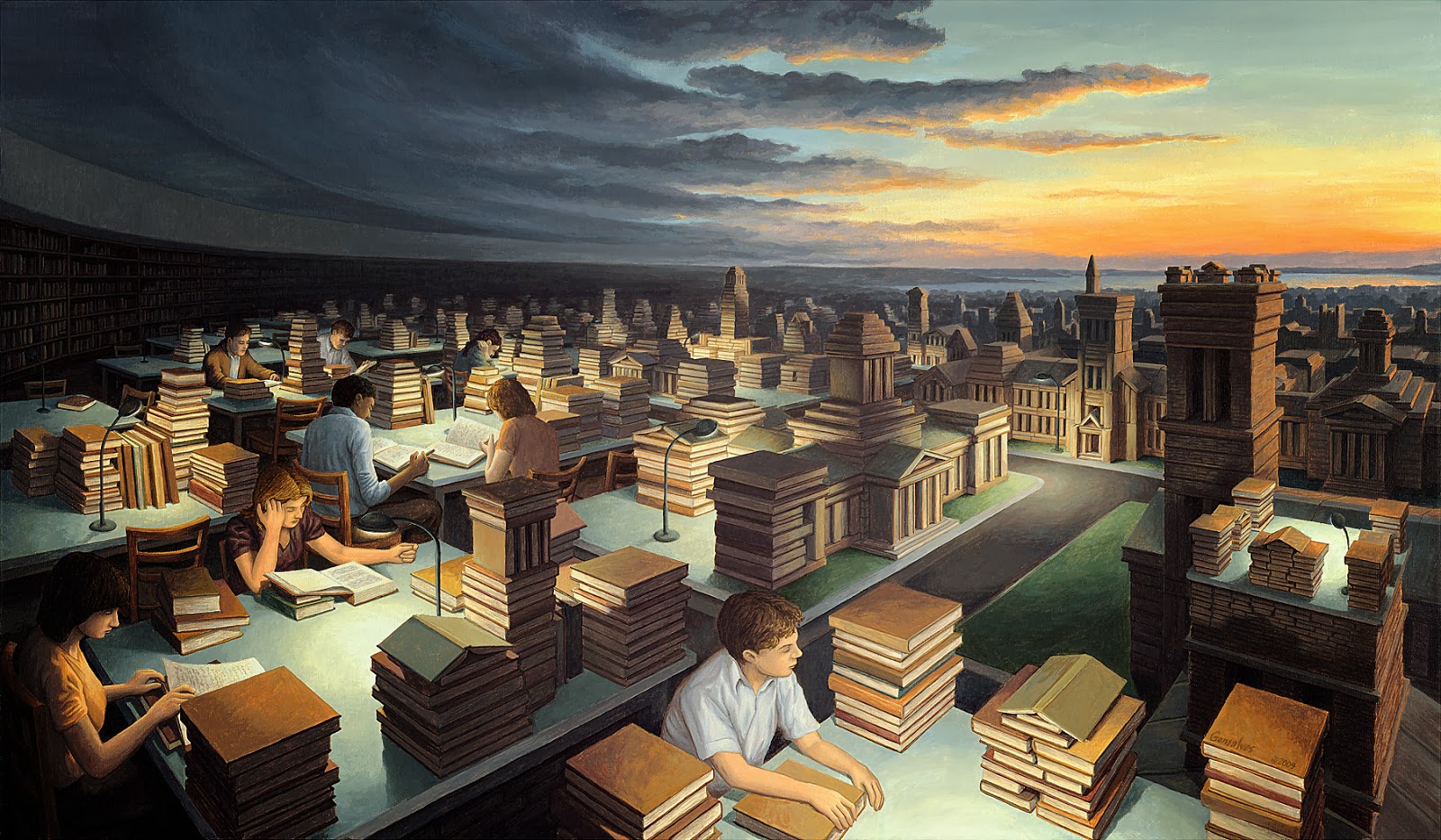 The Art: Towers of Knowledge
The Art: Towers of Knowledge
The Artist: Rob Gonsalves
To experience a Rob Gonsalves painting is to embark on a spellbinding adventure through a land where magic co-exists with the mundane. It is mystic, fantastic, and comes from a plane of reality that, on the rarest of occasions, reaches out to speak to the greatest artists of our own world.
Rob Gonsalves was one of those artists.
Two months before his suicide at the age of 57, Gonsalves wrote on Facebook that “The ‘making’ of art feels more like finding something that is telling me it needs to exist. Each picture has it’s own life and journey. I don’t know exactly where it comes from; I just open a door for it to make its entrance”.
The ability to open those doors would not have existed if Gonsalves had not combined a fascination both for the arts and architecture at an early age. As a teen he toyed with perspective, but it wasn’t until he was in his thirties that he would be introduced to artists like Escher, Dali, and Tanguy; artists who would light the beacons on his path to excellence.
Of course, the process itself was far more involved than Gonsalves reveals in this quote. In a short documentary (seen below), he says that 60% of the time it takes to create a painting is spent in the conceptual phase, sketching and tweaking ideas before commencing work on the final piece. No wonder then that his collections demonstrate such consistent reverence to the power of the illusion and the magic of the scene unfolding.
Much of Gonsalves work, such as The Phenomenon of Floating, explore humanity’s nature with the wonders of its environment – the seas, the sky, the stars. Towers of Knowledge, on the other hand, seems a far more introverted, more personal piece. It speaks to the value of learning, and the importance of knowledge as the foundation of a strong society. The magical realism of the work brings a certain romanticism to this relatable image, highlighting the power of what’s unfolding in a way we often fail to appreciate.
Another overarching theme was the exploration of the impossible, and our desire to believe in it. Thanks to Gonsalves’ work in conjuring the impossible before our eyes, our belief is reaffirmed. That is the legacy he leaves behind; a legacy that will live for many, many years to come.
